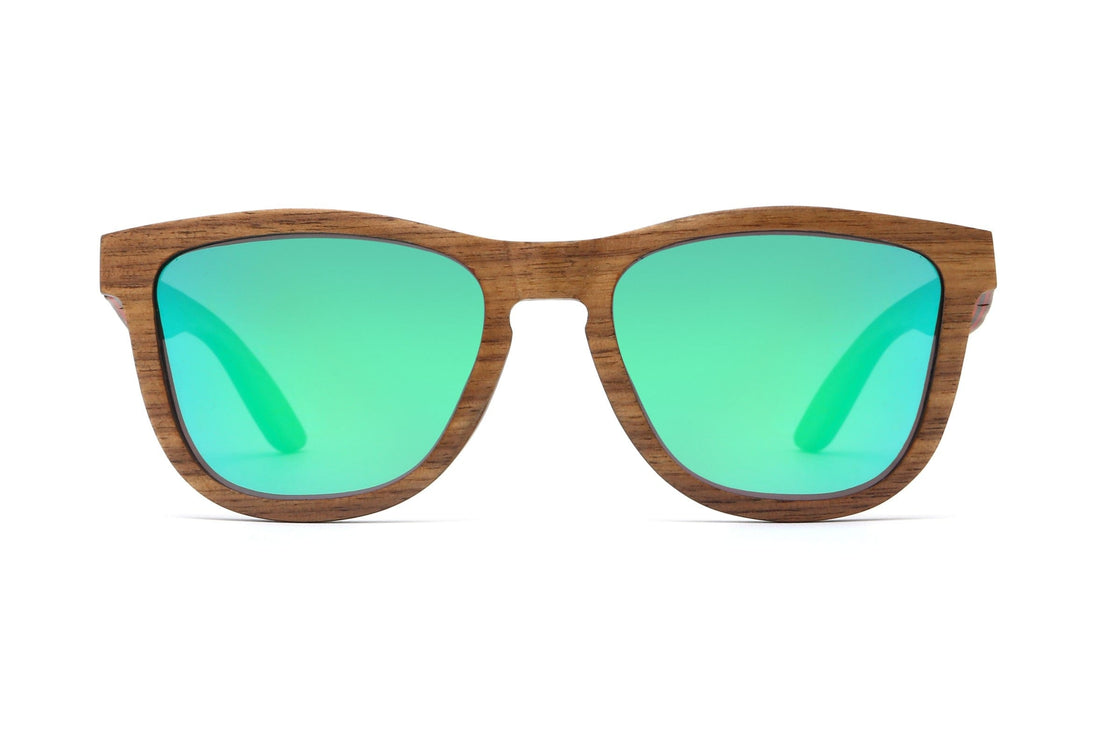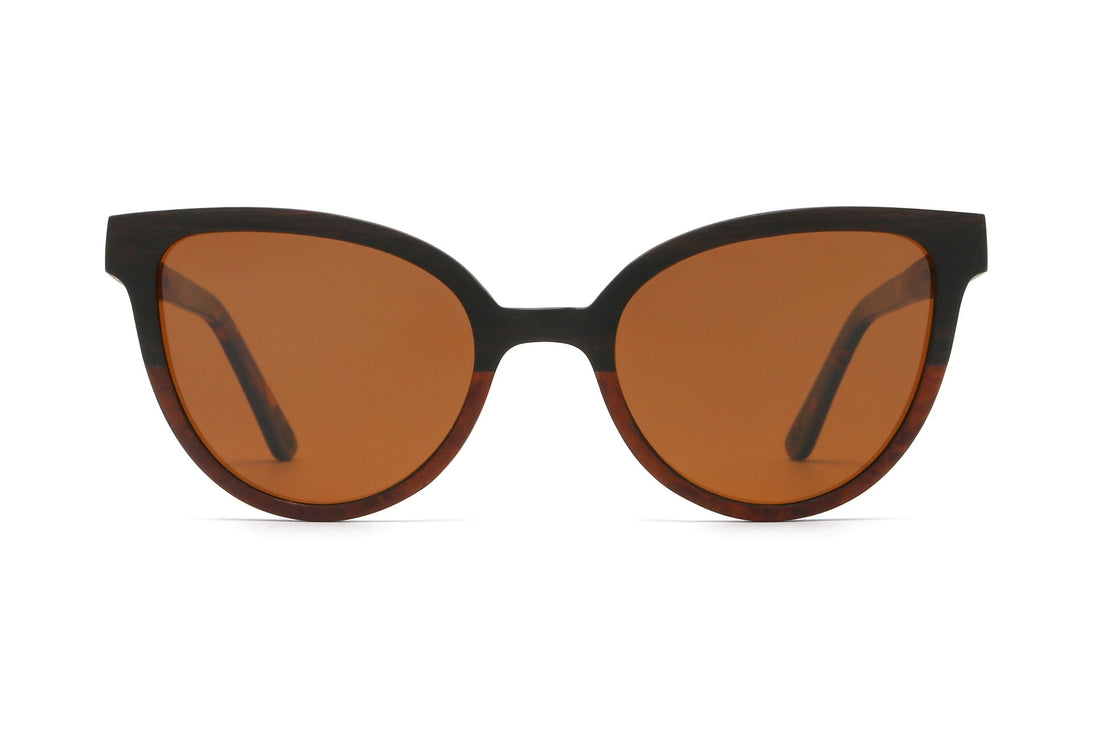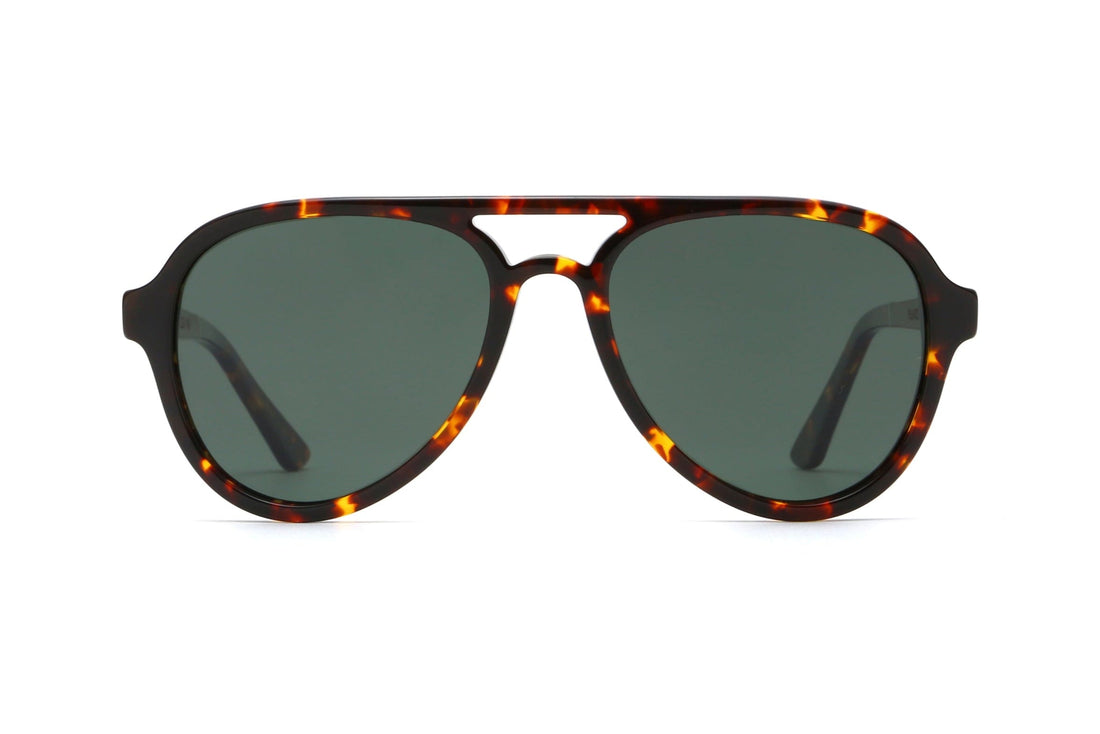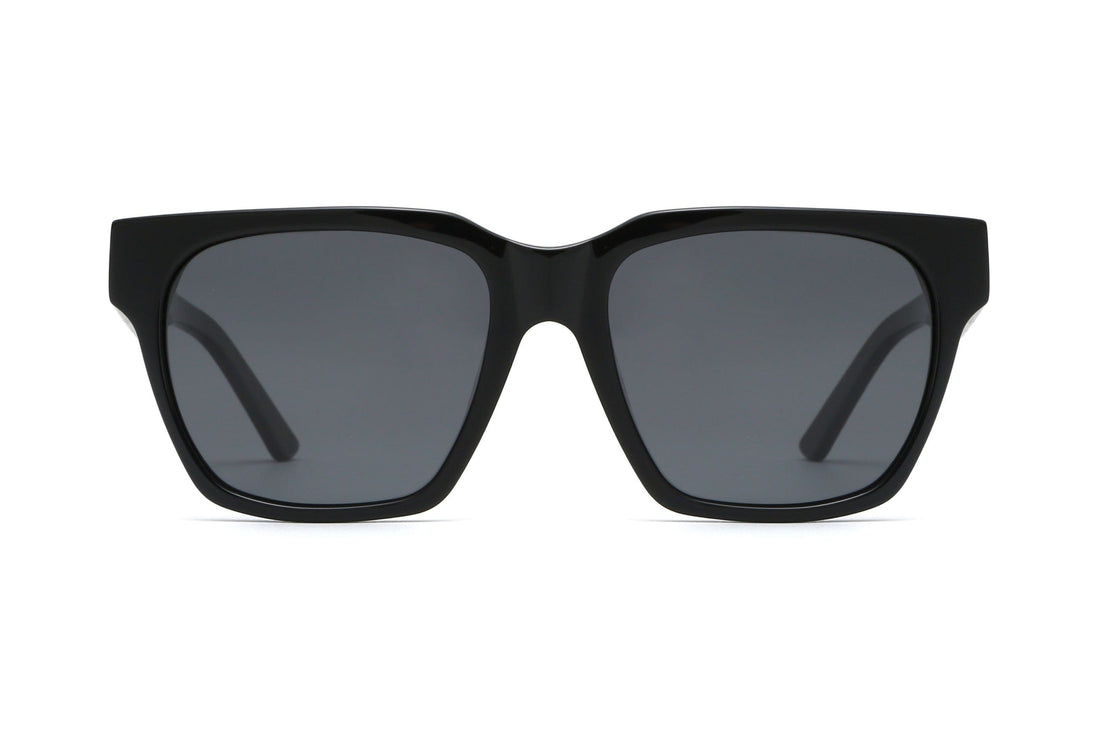
Polarized vs. Non Polarized Sunglasses: What’s the Difference?
Polarized vs. Non Polarized Sunglasses
8 Minutes read • Updated 22 October 2025
Not all sunglasses are created equal — especially when it comes to how they handle light. If you’ve ever squinted through a pair of shades on a sunny day and still felt blinded by glare, you might have been wearing non-polarized lenses.
So, what’s the deal with polarized sunglasses vs. non-polarized ones, and why does it matter?
In this guide, we’ll break down the science of polarization, compare the benefits of both lens types, and help you choose the right option based on your lifestyle — whether you're driving, enjoying outdoor adventures, or spending time near water.
Here’s what you’ll learn:
-
What polarized sunglasses are and how they work
-
The benefits of polarized vs. non-polarized lenses
-
How different lenses perform in real-life situations (like driving, screen time, and more)
-
Tips to check if your sunglasses are polarized
-
What to look for when shopping for polarized eyewear
Polarized Sunglasses and How They Work
To understand the use of polarized sunglasses, you first need to grasp the concept of polarization. Light travels in waves, and under natural conditions, it moves in all directions. But when light reflects off flat surfaces — like water, roads, or glass — it becomes polarized, meaning the waves align horizontally. This concentrated light creates glare, which can obscure your vision, cause discomfort, and even lead to eye strain.
Polarized lenses are specially designed to combat this. They contain a built-in filter that blocks horizontal light waves, significantly reducing glare without dimming your surroundings. This is particularly beneficial in bright outdoor settings where reflective surfaces are common — think driving on a sunny highway, fishing on a lake, or skiing down a slope.
Unlike regular tinted lenses, which only darken your field of view, polarized lenses actively enhance contrast and clarity. They allow vertical light — the useful kind — to pass through, while neutralizing the scattered, blinding light that causes visual noise.
Whether you're looking to protect your eyes, improve visual comfort, or reduce glare-induced fatigue, polarized sunglasses offer a smarter, more effective solution than non-polarized alternatives.
Polarized vs. Non-Polarized Sunglasses: Key Benefits Compared
Understanding the unique benefits of each lens type helps you choose the right sunglasses for your lifestyle.
When it comes to choosing between polarized and non-polarized sunglasses, the right option depends on how — and where — you plan to use them. Both lens types offer protection from UV rays, but they serve different functions in terms of glare control, visual clarity, and versatility.
Benefits of Polarized Sunglasses
Polarized lenses enhance visual clarity and comfort by filtering harsh glare and reducing eye strain.
-
Glare Reduction: Polarized lenses dramatically reduce glare from reflective surfaces like roads, water, snow, and car hoods — this makes them ideal for driving and outdoor use. As Healthline notes, they help reduce bright reflections, unwanted glare, and improve visual clarity and color perception in high-glare conditions.
-
Improved Clarity and Contrast: By filtering out scattered horizontal light, polarized lenses enhance contrast and sharpen your visual field.
-
Less Eye Strain: With reduced glare, your eyes don’t have to work as hard, making polarized sunglasses more comfortable for long wear.
-
Better Color Perception: Polarization allows for richer, more accurate color recognition in bright light environments.
Benefits of Non-Polarized Sunglasses
Non-polarized lenses offer basic sun protection without affecting screen visibility or contrast perception.
-
Universal Use: Non-polarized lenses are suitable for general use and indoor-outdoor transitions, especially in situations where glare reduction isn’t critical.
-
More Affordable: They tend to cost less than polarized versions, making them a budget-friendly option for casual wear.
-
Ideal for Some Screens: Polarized lenses can interfere with visibility on LCD or LED screens, such as phones, GPS devices, or digital dashboards. Non-polarized sunglasses avoid this issue.
-
Low-Light Flexibility: Non-polarized lenses may offer better visibility in low-light conditions, like cloudy days or shaded trails.
When to Choose Polarized or Non-Polarized Lenses
Choosing the right lens depends on how and where you use your sunglasses most often.
Both polarized and non-polarized sunglasses offer UV protection, but their performance varies depending on your activity and environment. Here's how they stack up in everyday situations:
Outdoor Activities and Nature
Polarized lenses improve visibility and reduce eye fatigue during outdoor activities like fishing or hiking.
When spending time outdoors—whether hiking, fishing, or relaxing by the water—polarized sunglasses really shine. The main advantage is their ability to cut through glare off reflective surfaces like water, wet leaves, or snow. This means you see textures and details more clearly, from the ripple of waves to the contour of uneven terrain, making your outdoor experiences more vibrant and less eye‑straining.
Non‑polarized lenses will still block UV rays and reduce overall brightness, but they don’t filter out horizontal glare in the same way. So reflections from a lake or glare from wet rocks can still distract you or reduce visibility. If you often find yourself squinting outdoors, polarized lenses will make a noticeable difference in comfort and clarity.
Driving and On-the-Road Performance
Polarized sunglasses can reduce headlight glare and road reflections for safer driving.
Driving in bright daylight or during dawn/dusk periods puts your eyes under stress. Reflected light from the road, neighboring cars, and windshields can blur vision. Polarized sunglasses minimize this glare, improving contrast and helping you see obstacles, road signs, or pedestrians earlier. This can lead to safer reactions and less fatigue on long drives.
On the other hand, non‑polarized sunglasses are less likely to distort the appearance of LCD screens on dashboards or GPS units (which polarized lenses sometimes interfere with). Non‑polarized lenses often offer more consistent visibility for interior car displays under bright sunlight. This makes them a better choice if you need to read screens frequently while driving.
Also consider how polarized lenses behave at different angles of sunlight and whether your car has a curved windshield (which can sometimes cause uneven glare artifacts). Pairing polarized lenses with high UV protection and good lens quality helps ensure the benefits without introducing new complications like reduced visibility of your dashboard or street markings.
Screen Use and Tech Visibility
Non-polarized lenses are better suited for screen use, as they don’t interfere with digital displays.
While screen time is mostly an indoor concern, it still matters for sunglasses when you use devices outdoors or near windows. Polarized lenses can reduce glare from screens under bright sunlight (e.g. if you're using a tablet outside), enhancing readability and reducing squinting. But in shaded or indoor settings, that same polarization might make certain LCD screens appear dimmer or produce weird patterns.
Non‑polarized lenses don’t typically interfere with screen clarity, which makes them a safer bet if you plan to transition between outdoor brightness and screens often. If you’re someone who works on a laptop by a window or reads on a tablet under sunlight, non‑polarized may offer more consistent clarity, though with less glare reduction.
Whichever lens type you choose, make sure it includes proper UV protection and minimal distortion across the lens surface. Checking lens quality (uniform tint, clear edges) helps avoid visual artifacts that can be more noticeable in screen work, especially at angles.
Prescription Lens Compatibility
Both polarized and non-polarized lenses can be customized with your prescription needs.
If you wear corrective lenses, selecting sunglasses that accommodate your prescription is essential. Polarized lenses with prescription correction offer glare reduction plus sharp vision—that makes them an excellent choice for outdoor drives, bright sun, or water reflections, where glare is most impactful.
Non‑polarized prescription sunglasses still give you corrected vision and UV protection, but with less glare control. For some wearers, combining clear or lightly tinted lenses with anti‑reflective coatings can offer a compromise, maintaining sharp vision without the potential side effects polarized lenses can have in certain conditions (like on screens or dashboards).
Still unsure which to choose? If you spend a lot of time outdoors, especially near water or while driving, polarized is usually the better investment. But for everyday fashion, casual wear, or screen-heavy environments, non-polarized sunglasses may do the trick. Here's a quick summary to help you choose between polarized and non-polarized lenses:
| Priority | Recommended Lens | Why It Matters |
| Driving or commting | Polarized | Cuts glare from roads and windshields for safer, clearer vision. |
| Fishing, hiking, or water sports | Polarized | Reduces glare from water, snow, and rocks; enhances depth perception. |
| Working with LCD or LED screens (e.g., pilots, dashboard use) | Non-polarized | Polarized lenses can distort or darken digital displays. |
| Low-light or cloudy conditions | Non-polarized | Allows more light transmission and balanced visibility. |
| Budget-friendly everyday wear | Non-polarized | Cheaper, versatile, still provides UV protection. |
| Sensitive eyes or long outdoor exposure | Polarized | Minimizes eye strain and boosts contrast. |
| Style and color fidelity | Polarized | More accurate color perception, higher visual comfort. |
How to Tell If Your Sunglasses Are Polarized
Not sure whether your sunglasses are polarized or not? Luckily, there are a few easy ways to find out — no special equipment required.
There are simple tests to check for polarization using screens, reflections, or another pair of lenses.
Method 1: LCD Screen Rotation Test
One of the simplest ways to test for polarization is by using your smartphone, GPS screen, or any LCD display. Put on your sunglasses and look at the screen. Then, slowly rotate the sunglasses while keeping your head still. If the lenses are polarized, the screen will appear to darken or show a rainbow effect at certain angles. That’s the polarized filter blocking specific light waves.
Method 2: Reflection Test in Sunlight
Hold your sunglasses in front of your eyes and look at a reflective surface — like a car windshield or a body of water — on a sunny day. Tilt the lenses back and forth. Polarized lenses will noticeably reduce the brightness and clarity of the reflection, while non-polarized lenses won’t make much of a difference.
Method 3: Cross-Check With Another Polarized Lens
If you already own a pair of verified polarized sunglasses, place the lenses of both pairs perpendicular to each other (forming an “X” shape). If both are polarized, the overlapping area will turn significantly darker due to the double filtration. If nothing changes, one or both pairs may not be polarized.
These quick checks can help you confirm the presence of polarization, especially if the labeling on your lenses isn’t clear. For shoppers, always check product descriptions to ensure you're getting the benefits of true polarized lenses.
Vision Through Groove Polarized Sunglasses
What to Look for When Buying Polarized Sunglasses
Focus on lens technology, comfort, and quality materials when selecting polarized sunglasses.
Shopping for the best polarized sunglasses involves more than just picking a stylish frame. To ensure optimal vision protection and comfort, here are the essential features to consider:
1. Functionality for Everyday Use
Consider how you’ll use your sunglasses day-to-day. If you're often outdoors or driving, choose frames equipped with spring hinges — they offer added flexibility and reduce pressure on your temples for all-day comfort. A good fit ensures your sunglasses stay secure and functional during movement, making them ideal for active lifestyles.
2. Durability and Frame Materials
Durable frames are a must, especially for everyday wear. Wooden frames, particularly those made from laminated materials, offer long-lasting strength. Handcrafted construction, also, enhances both aesthetic appeal and overall build quality. Our handcrafted wooden sunglasses collection checks all the boxes, delivering the clarity and glare protection of polarized lenses while being sustainable, eco-friendly, and uniquely stylish.
3. Lens Tint and Visual Performance
The lens tint affects how you see the world — here’s a quick guide to help you choose:
-
Grey: Maintains true color perception and reduces overall brightness and glare, making it perfect for driving or outdoor sports.
-
Yellow/Orange: Enhances contrast in fog or low light, though it may slightly distort colors; best for snow activities and indoor sports.
-
Green: Reduces glare while maintaining color balance and contrast, great for activities like golf or tennis.
-
Brown/Amber: Blocks blue light and enhances contrast, especially against natural backgrounds — ideal for fishing or hiking.
-
Melanin: Filters harmful UV rays and supports long-term eye health, especially beneficial for individuals with macular degeneration.
-
Red/Rose: Increases contrast and visual comfort, reduces eye strain, and is great for driving or screen-heavy tasks.
Find out more about sunglasses lens tints and discover which is best for you in our sunglasses lens colour guide.
4. High-Quality Lens Material
High-quality lens material is key to protection and clarity. Look for sunglasses with TAC polarized lenses, which offer superior optical clarity and impact resistance. Ensure your lenses come with 100% UV protection against UVA and UVB rays, and opt for an anti-reflective coating to minimize internal reflections and enhance visibility.
5. Fit and Face Shape Compatibility
The fit of your sunglasses not only affects comfort but also visual performance. Choose frames that align with your face shape and offer a snug, balanced fit. Whether you prefer bold statement pieces or minimalist designs, Kraywoods offers a wide range of styles — from geometric to classic — handcrafted to complement your look while staying practical for everyday wear.
Get to know your face shape easily using our face shape guide and ckeck out how to choose the best sunglasses guide to discover what sunglasses flatter your face shape the most.
Why Choose Kraywoods Polarized Sunglasses
When it comes to premium eyewear, Kraywoods strikes the perfect balance between style, sustainability, and optical performance. Every pair of Kraywoods polarized sunglasses is crafted with care using high-quality, eco-friendly materials — including sustainably sourced wood frames, premium metal frame sunglasses and bio-acetate frames — for a timeless yet modern look.
Our lenses are equipped with TAC polarization technology, offering 100% UVA/UVB protection and advanced anti-glare filtering. Whether you're driving, hiking, or simply enjoying a sunny day, Kraywoods polarized lenses reduce eye strain and enhance visual clarity without compromising on aesthetics.
We also offer prescription-ready polarized options, so you never have to choose between vision correction and sun protection. With durable stainless steel spring hinges, flexible nose pads, and thoughtful frame designs for every face shape, Kraywoods sunglasses are made for all-day comfort and long-lasting wear.
If you're looking for clear polarized sunglasses for driving, stylish women's frames, or unisex eco-conscious designs, our sunglasses collection has something for everyone.
FAQs About Polarized vs. Non-Polarized Sunglasses
These FAQs clarify when and why to choose polarized or non-polarized lenses based on your needs.
1. What is the main difference between polarized and non-polarized sunglasses?
Polarized sunglasses reduce glare from reflective surfaces, while non-polarized sunglasses only reduce brightness without filtering glare. The difference is most noticeable near water, roads, or snowy environments.
2. Are polarized sunglasses better for driving?
They’re better for glare-heavy situations like driving or being on the water, but not ideal for screen use or activities requiring clear display visibility. It depends on your lifestyle and needs.
3. When should you not wear polarized sunglasses?
Avoid wearing them when using digital screens, skiing (where icy patches need to be visible), or operating LCD devices. They may reduce visibility in these situations.
4. Do polarized lenses provide UV protection?
Polarization and UV protection are different features. Some polarized lenses also include UV blocking, but always check the label to confirm both are present.
5. Are there downsides to polarized sunglasses?
While they’re great for outdoor glare, polarized lenses can make it difficult to read LCD screens or judge contrast in low-light settings. If you need sunglasses for both bright and shaded environments, consider having multiple pairs for different conditions.
6. Can prescription sunglasses be polarized?
Yes. Many eyewear brands, including Kraywoods, offer polarized lenses with prescription customization for both vision correction and glare reduction.
Final Thoughts: Which Sunglasses Are Right for You?
Your perfect pair of sunglasses depends on how you balance style, comfort, and functional lens features.
When it comes to polarized vs. non-polarized sunglasses, the best choice depends on your lifestyle and needs. If you spend a lot of time outdoors, drive frequently, or engage in activities around reflective surfaces like water or snow, polarized sunglasses offer unbeatable glare protection and visual clarity. On the other hand, if you primarily need general sun protection or wear sunglasses while viewing digital screens, non-polarized lenses might suffice.
At Kraywoods, we’re committed to helping you find eyewear that not only suits your vision but also aligns with your values and style. Our polarized sunglasses collection features handcrafted frames with premium lenses, designed for both performance and aesthetic appeal.
For a blend of sustainability, craftsmanship, and optical excellence, Kraywoods is your go-to destination for all things eyewear.
 Rachad Kabbara
Rachad Kabbara













